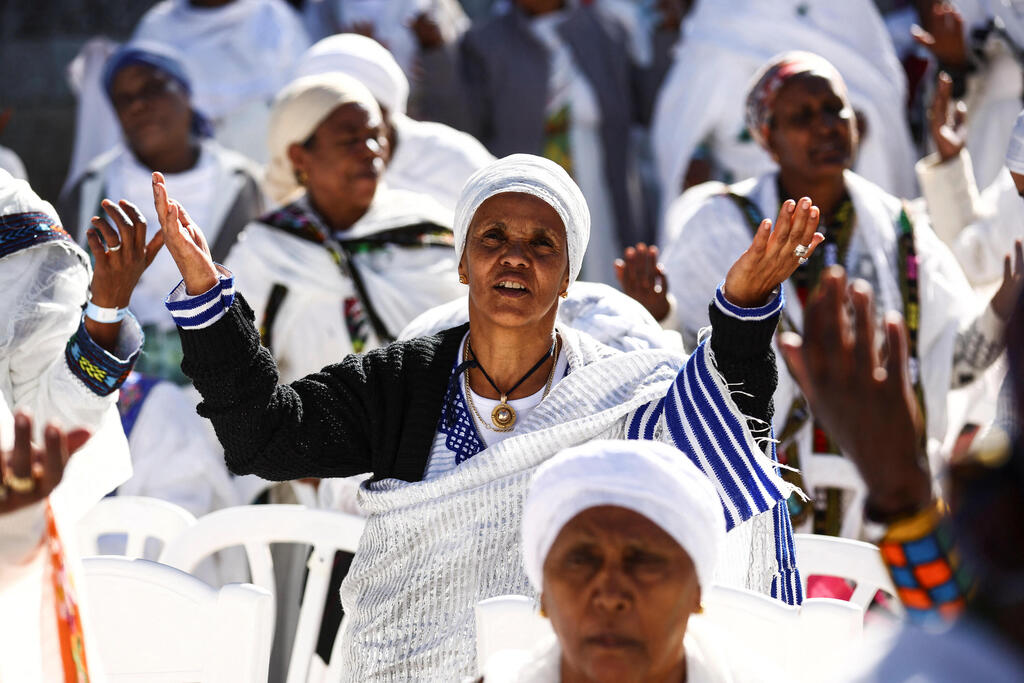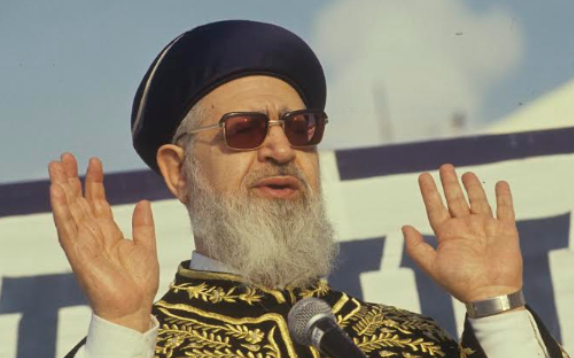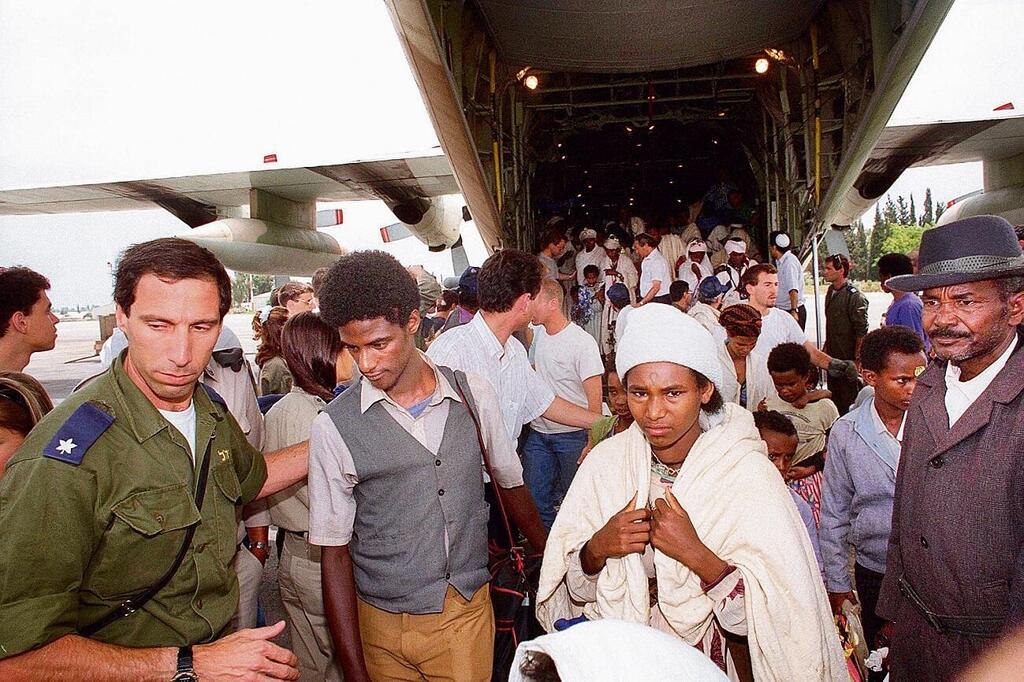The halachic (Jewish law) status of the Jewishness of Bete Israel (Ethiopian Jewry) has been a subject of debate for centuries. This article presents the history of the subject with the goal of ending the ongoing saga about their status.
A test case for this examination is the relationship between the Ethiopian Jewish community and the Chabad Lubavitch hasidic movement.
I recently received an inquiry from a very special person who is a supporter of both Ethiopian Jews and Chabad hasidism. He was surprised and anguished to discover that Chabad hasidim have difficulty in viewing the Bete Israel as being fully Jewish. As there are many inaccurate accounts about the subject of the Jewish status of Bete Israel, in general, and as seen by Chabad, I believe it is important to look at the earliest halachic sources and trace the process as it moved to our day.
Historical recognition of Bete Israel’s Jewishness
Historically, renowned Jewish authorities have consistently affirmed the Jewishness of Bete Israel. In the 15th century, Rabbi Ovadia of Bartenura described the Jews of Ethiopia as, "Members of the children of Israel." Several years after him, Rabbi David ben Solomon ibn Abi Zimra, the ”Radbaz,” one of the greatest authors of halachic rulings, wrote that "those who come from the land of Kush are undoubtedly from the tribe of Dan.“
This Radbaz’s ruling has guided the approach of our sages on the question of the Jewishness of the Bete Israel throughout the generations. In the 19th century, German Rabbi Azriel Hildesheimer issued a similar opinion, as did Rabbi Meir Leibush Weiser (the “Malbim”) who wrote: "The Falashas (archaic and derogatory term for Ethiopian Jews) are undoubtedly from the seed of Israel and action must be taken to save them."
In 1908, a unique letter was issued by 44 rabbis representing many branches of Rabbinic Judaism, including Rabbi Azriel Munk of Berlin, Rabbi Yitzchak Yaacov Reines of Lithuania (the founder of the “Mizrachi” movement), Rabbi Yaakov Dovid Wilovsky (the “Ridbaz” of Safed), Rabbi Eliyahu Moshe Panigel (the Sephardi chief rabbi of the Ottoman Empire, Palestine and Jerusalem), Rabbi Mordechai Horowitz of Frankfurt and others. The letter, addressed to, “[O]ur brothers, the sons of Abraham, Isaac and Jacob, who live in the land of Abyssinia” prayed for their speedy return to Zion.
5 View gallery


Prime Minister Yitzhak Shamir and Foreign Minister David Levy greet Jewish immigrants from Ethiopia, 1991
(Photo: IDF Archives)
At the beginning of the 20th century, Rabbi Abraham Isaac Kook (the first Ashkenazi chief rabbi of British Mandatory Palestine) issued a plea to "[s]ave our brothers the Falashas (an archaic and derogatory term for Bete Israel) from destruction and assimilation.”
In this same vein, Rabbi Yitzhak HaLevi Herzog, a subsequent Ashkenazi chief rabbi of the British Mandate of Palestine and of Israel after its independence, wrote to the Jewish Agency (the Jewish proto-government prior to independence) asking them to save, “[o]ur brothers the Falashas in Abyssinia."
In our generation, Rabbi Ovadia Yosef, the leading Sephardic authority, issued a significant ruling in 1973, recognizing the Jewishness of Bete Israel and demanding that they be brought to Israel.
Rabbi Moshe Feinstein, the leading Ashkenazi arbiter of Jewish law in the last generation, wrote that it "is a mitzvah to save them from destruction and danger, as is the law for any Israelite." He added that those who refrain from assisting them do so "because the color of their skin is black."
While Rabbi Ovadia Yosef, following the Radbaz, believed the Bete Israel were Jewish and did not need conversion, Israel’s Chief Rabbinate and most halachic judges chose to require a symbolic conversion to be on the safe side.
Most Bete Israel have undergone symbolic conversions or are children of those who did. Some members of Bete Israel opposed the requirement for symbolic conversion and demanded that they be accepted as Jews without any conditions. Some Ashkenazi ultra-Orthodox authorities require Ethiopian Jews to undergo regular, full conversion, not because they don’t believe they are Jews, but instead due to concerns they have about having mixed with non-Jews over the centuries, creating worries about the laws of marriage and divorce.
Finally, about four years ago, Israel’s Chief Rabbinate decided to adopt the 1973 ruling of Rabbi Ovadia, recognizing the Jewishness of Bete Israel, noting that there is no halachic concern requiring even symbolic conversion. Since then, small numbers of Bete Israel have been accepted as Jews without the need for symbolic conversion.
What about the Chabad hasidic movement?
The Lubavitcher Rebbe first addressed the question of the Jewishness of Bete Israel a few days before Operation Solomon, the 1991 covert Israeli military mission that airlifted over 14,000 Ethiopian Jews to Israel. The Rebbe said during a “Hisvaadus” (spiritual gathering) with his hasidim, "Tomorrow we are expected to hear good news about the arrival of thousands of Jews to the Land of Israel." Many Chabad rabbis have confirmed to me that this statement made it clear that the Rebbe recognized the Jewishness of Bete Israel.
Later, the Rebbe was asked directly by Chabad emissaries to issue an official ruling on the Jewishness of Bete Israel. He agreed, but immediately afterward, recused himself, citing his incomplete knowledge of the relevant history of Ethiopian Jewry. He lamented that the halachic issue was being muddled by political and partisan considerations, and they have been the major determinants.
Ultimately, the Rebbe deferred to the decision of Israel’s Chief Rabbinate, which, as noted, initially required only symbolic conversion. As such, the predominant Chabad attitude to the question of Bete Israel’s Jewishness has been respect for the members of the community as individuals, and a fundamental requirement that they comply with the Rabbinate’s demands for symbolic conversion. Many Chabad rabbis in Israel have told me that any Ethiopian Jew who has undergone symbolic conversion as required by the Israeli Rabbinate will be admitted to any institution under the supervision of Chabad hasidism without any hesitation.
A Chabad rabbi in Kiryat Malachi shared with me that, in practice, the only important consideration regarding accepting someone as a Chabad hasid is that person’s acceptance of the Chabad way of life. He said, “We do not check who has converted through symbolic conversion and who has not. We accept the status of the Ethiopian Jews solely based on their say so.”
Unfortunately, it seems that some Chabad representatives outside of Israel are not familiar with this ruling and do not regard Bete Israel as Jewish. Based on my research, I have concluded that this stand is not based on racism, but rather on ignorance about the halachic approach espoused by Chabad rabbis in Israel.
How can we make things better?
Most Ethiopian Jews who immigrated to Israel have undergone symbolic conversion, as that was the most standard procedure, and until recently, the position of the Chief Rabbinate. Those who have undergone symbolic conversion are recognized as Jews by nearly all sectors in Israel, including by Chabad.
However, there was a small group of Bete Israel who refused to undergo symbolic conversion. In addition, after the Rabbinate retroactively accepted the ruling of Rabbi Ovadia Yosef which did not require symbolic conversion, there is another small group of Bete Israel who have not done so. As such, the number of Bete Israel who have not undergone symbolic conversion (a step that would grant recognition by the overwhelming majority of rabbinic authorities) is relatively small.
Get the Ynetnews app on your smartphone: Google Play: https://bit.ly/4eJ37pE | Apple App Store: https://bit.ly/3ZL7iNv
It would seem prudent to launch an information campaign to communicate these realities to all the faithful Chabad emissaries around the world, who work with such devotion to promote Torah Judaism. They should receive instruction to reach out to every Jew everywhere and remind them of Chabad’s practice of accepting Ethiopian Jews who have undergone symbolic conversion without any hesitation.
This tolerance comports with what we know and see every day in the Chabad movement. Chabad is known for its very positive approach to everyone. A Chabad rabbi told me, "If someone in Chabad expressed a negative attitude toward a person because of his origin or color, he has acted against the way and spirit of Chabad."
This attitude needs to become the dominant one among all Jewish people. Let us work to foster an attitude of tolerance and love, alongside respect for the halachic practice, which as noted, concludes that any member of Bete Israel who has undergone symbolic conversion must be recognized as fully Jewish.
- Dr. Sharon Shalom, head of the International Center for the Study of Ethiopian Jewry, Ono Academic College





